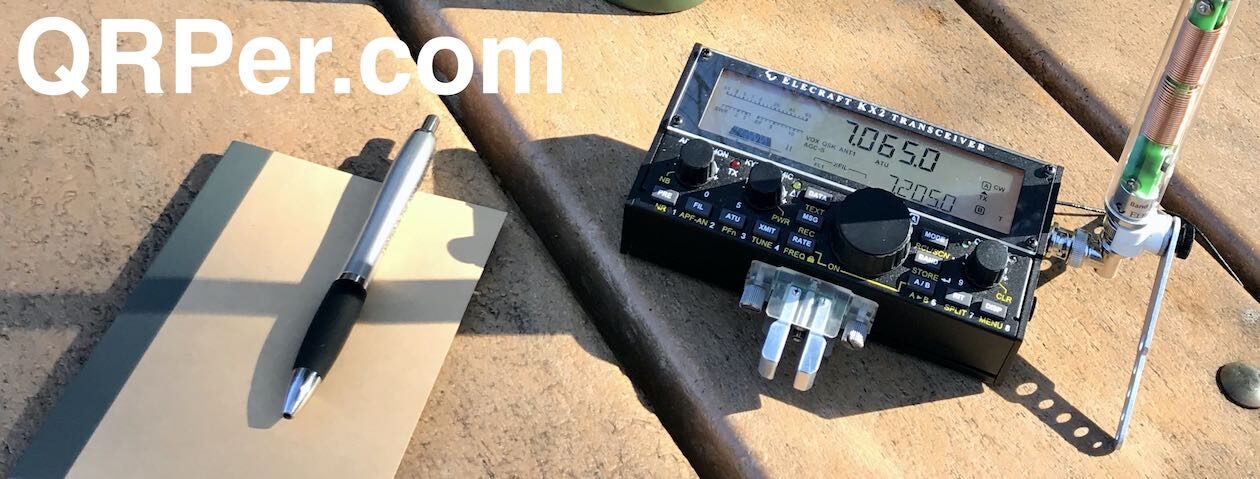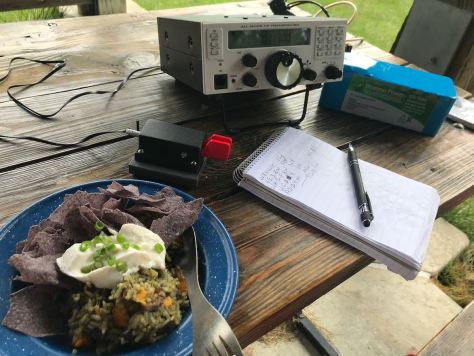 Many thanks to Rob Sherwood (NC0B) who notes that Icom has published details regarding their new AH-705 antenna tuner which is designed to pair directly with the Icom IC-705 QRP transceiver.
Many thanks to Rob Sherwood (NC0B) who notes that Icom has published details regarding their new AH-705 antenna tuner which is designed to pair directly with the Icom IC-705 QRP transceiver.
Many Icom IC-705 owners have been waiting to learn more about the AH-705 before purchasing a dedicated portable ATU for their IC-705. Some of these details may help potential customers make a purchase decision.
Key specifications and features per Icom:
- Covers the 1.8 MHz to 50 MHz bands
30 m, 98.4 ft or longer antenna: 1.8 – 54 MHz, 7 m, 23 ft or longer antenna: 3.5 – 54 MHz
* Depending on operating conditions or environments, the tuner may not be able to tune the antenna.
- SO-239 antenna connector for 50 Ω antenna such as dipole or Yagi
- “Terminal connector”, binding post socket adapter supplied for a long wire antenna
- 2-way power sources using alkaline batteries (2 x AA cells) or external 13.8 V DC*
* 13.8 V DC should be taken directly from an external power supply, not through the IC-705. - IP54 dust-protection and water resistance construction*
* The connectors should be covered with an adhesive tape or a jack cover to prevent water seeping into the connection. - Full automatic tuning, just push the [TUNER] button on the IC-705
- Latching relays used for saving power consumption
- 190 × 105 × 40 mm; 7.5 × 4.1 × 1.6 in, 450 g; 15.8 oz* compact design
* Battery cells are not included. - 45 tuner memories
 Of course, I don’t have an AH-705 in hand to test yet, so there’s no way I can comment on performance.
Of course, I don’t have an AH-705 in hand to test yet, so there’s no way I can comment on performance.
Still, I can’t turn of the reviewer inside so I feel I can make some superficial comments assuming the specs don’t change.
Potential positives?
- Complete integration with the IC-705
- Could (potentially–?) be permanently mounted outdoors at the antenna feed point as a dedicated remote tuner
- IP54 dust and water resistant
- Power from internal batteries and an external DC source
- It’s an Icom product, so I would expect excellent overall quality
Potential negatives?
- Maximum wattage is only 10W, which I suppose is okay if you never put an amplifier between the IC-705 and the AH-705
- Based on Icom specs, the AH-705 is larger than other portable ATUs at 7.5 × 4.1 × 1.6 inches. For example:
- Mat-Tuner mAT-705Plus is 5.5 x 2.4 x 0.9 in
- Elecraft T1 is 4.4 x 2.5 x 0.9 inches
- Some have noted pricing around $350 US price–that’s a premium for a portable ATU considering the Elecraft T1 is $180 assembled and many LDG models are less than $200. Of course, none of those ATUs have an IP54 rating, either.
- Speculation here, but the AH-705 might only work with the IC-705 or Icom radios with similar ATU commands. One original pre-production prototype image of the AH-705 shows a power switch; the latest images do not. Like the mAT-705Plus, I’m not sure if the AH-705 can be turned on in order to tune only via RF sensing without essentially modifying a control cable to trick the ATU into powering up.
I was a little surprised to see that the AH-705 “only” has 45 tuner memories. In truth, I never really pay attention to this spec because I’m primarily a field operator. My radio sessions are only an hour or two long and I routinely pair my transceivers with a wide variety of antennas, so a portable ATU never has a chance to develop a complex tuner memory map for any given antenna. But as a reviewer, I try to step in other operators’ shoes so I see where this could be a slight negative for those who plan to use the AH-705 at home and connected to only one antenna. As a point of comparison, the mAT-705Plus has 16,000 tuner memories. Still, memories only help shave off a bit of the auto-tuning time. This would never have an impact on my purchase decision.
Biggest positive for me? IP54 rating
Since the AH-705 is designed to be dust and weather resistant, it could be mounted at the antenna feed point. At home, perhaps it could act like an externally-mounted, remotely-controlled antenna tuner. I’m not sure what the maximum length of the control cable could be, but Icom Japan even lists a 16 foot control cable as an accessory. Of course, you would still need to follow Icom’s guidance about protecting the antenna, transmitter and control cable connection points.
Biggest negative for me? The size.
If the AH-705 specs are correct, it’s a little surprising Icom designed a portable ATU that’s this large. As you can see in the image above, it easily fits in the LC-192, but frankly since I’ve been an Elecraft T1 tuner user, I’ll notice that the AH-705 is 3.1″ longer, 1.6″ wider, and .7″ taller than the T1. It will certainly take up more backpack space.
Of course, unless I build an IC-705 control interface for the Elecraft T1, I can’t directly pair it with the IC-705 like I could with the AH-705. That said? I personally prefer pressing a tune button on the T1 and sending “QRL?” instead of hitting the PTT or CW key and allowing the IC-705 to kick in a continuous tune cycle for a few seconds. You might have noticed in some of my videos that when I tune to a new CW frequency, I’ll listen for activity, then tap the TUNE button on the T1 and send “QRL?” or “QRL de K4SWL”. By the time I’ve sent that string, the T1 has typically already found a match.
How will it perform?
I’ve got to assume the AH-705 will perform well. Icom tends to give their products thorough QC before shipping them to customers. I don’t anticipate any issues with the AH-705 as I did with the original maT-705, for example.
I’ll plan to test the AH-705 after it’s available.
For more information about the AH-705, check out the product page on Icom Japan’s website.








































